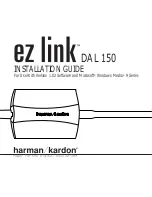
680 Synergy Plus – Digital Weight Indicator
8
Visit our website
2.4.6 Digital I/O
The Digital I/O port, J5 connector (
) is intended to be connected to both digital inputs and outputs.
Digital inputs can be set to provide many functions, including most keypad functions except MENU. Digital inputs are active low
(0 VDC) and inactive high (5 VDC). Use the Digital I/O menu to configure the digital inputs.
Digital outputs are used to control relays which drive other equipment. Outputs are designed to sink, rather than source current.
Each output is an open collector circuit, capable of sinking 20 mA when active. Digital outputs are active when low or at 0 VDC,
with reference to the 5 VDC supply.
Use the Digital I/O menu to set the function of the Digital I/O pins to OUTPUT and then use the Setpoints menu to configure the
digital outputs. See
for the pin assignments for the J5 connector.
2.4.7 Micro USB Device Communications
The Micro USB port, J7 connector (
), is intended to be connected to a PC only. It appears as a Virtual
COM Port and is assigned a “COMx” designation. Applications communicate through the port like a standard RS-232
communications port.
The driver must be installed on the PC before the Micro USB device port can be used. With the PC and 680 powered on, connect
a USB cable from the PC to the micro USB connector (J7) on the 680. The PC recognizes if a device has been connected, and
attempts to install the driver needed to make it work. The driver can also be downloaded from the
.
If using Windows 7 or later and the PC is connected to the Internet, the operating system may be able to install the
drivers automatically.
When the individual drivers are installed, a new COM Port designation is assigned for each physical USB port the 680 is
connected to on the PC.
For example, if the PC has two physical RS-232 COM Ports, they most likely are designated COM1 and COM2. When
connecting the 680 to a USB port on the PC, it is assigned the next available port designation, or in this case, COM3. When
plugging into the same physical USB port on the PC, the port designation is again COM3. If plugging into another physical USB
port on the PC, it is assigned the next available designation, in this case COM4.
After the drivers are installed, use Windows
®
Device Manager to determine the COM Port designation which was assigned to
the USB port, or open the application to be used with the 680, such as Revolution, to see which ports are available.
Configuration of the Micro USB port is done in the USBCOM sub-menu under PORTS in setup mode.
The port can be configured as either a demand port for EDP commands and printing, or as a data streaming port. Other settings
include the termination character(s), echoes, responses, the end-of-line delay and whether or not the 680 displays a 'print'
message when a print format sends data out the port.
If a computer application has an open communications connection through the Micro USB device port and the
physical cable connection is interrupted, a soft reset must be performed on the 680 or the power must be cycled to
the 680; the connection in the computer application must be disconnected and then reconnected before it continues
to communicate with the 680.
For the Micro USB device port, it does not matter what the settings are for Baud, Data Bits, Parity and Stop Bits in the
computer software. The port communicates in the same way regardless of these settings.
This port is not a host port and is not intended to be connected to other devices such as keyboards, memory sticks
or printers.
Connector
Pin
Signal
J5
1
5 VDC, 250 mA max
2
GND
3
DIO1
4
DIO2
5
DIO3
6
DIO4
Table 2-6. J5 Pin Assignments (Digital I/O)
Note
Note
Содержание Revolution 680 Synergy Plus
Страница 1: ...680 Synergy Plus Digital Weight Indicator Technical Manual August 14 2019 PN 192627 Rev A...
Страница 79: ......















































